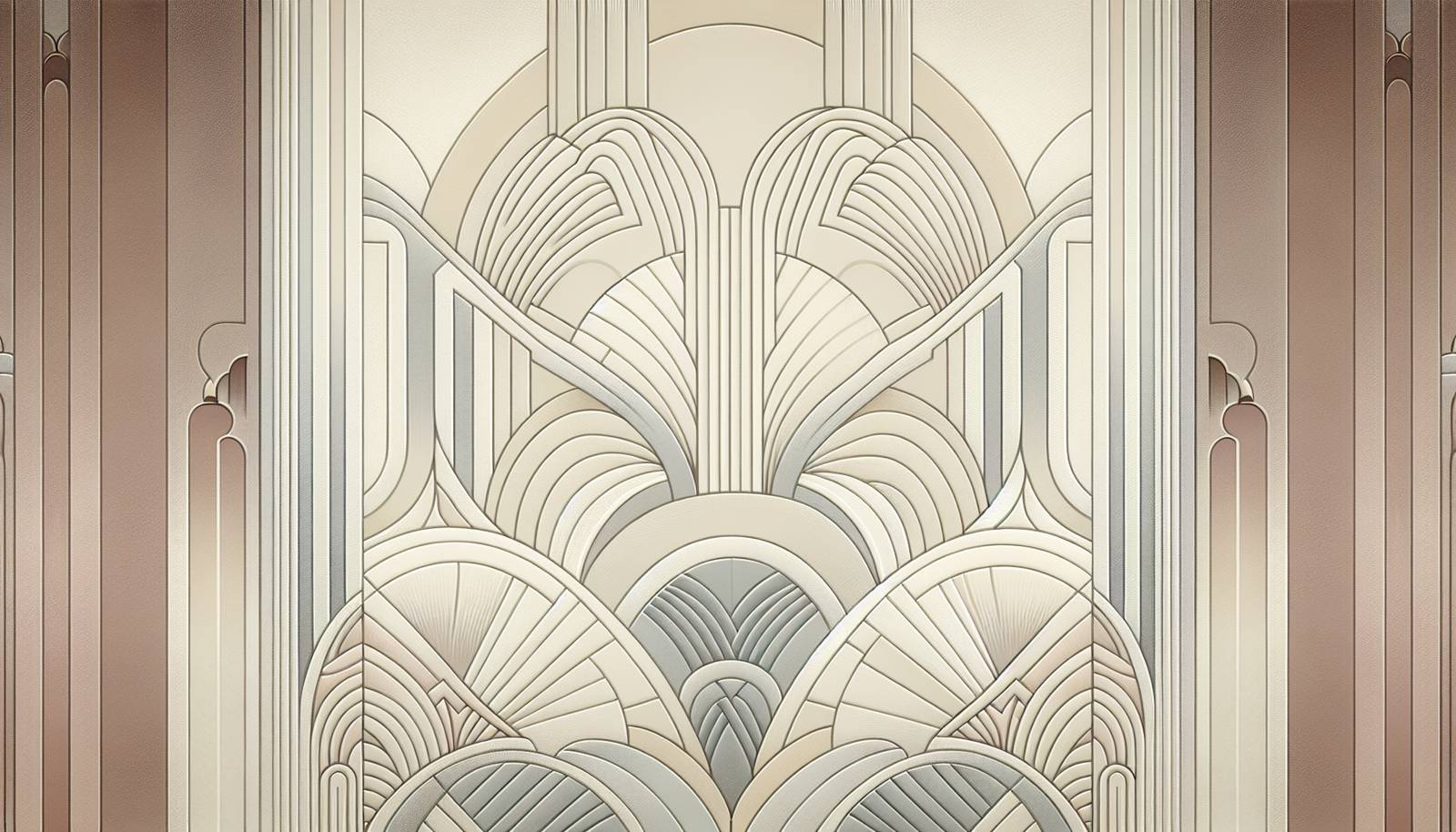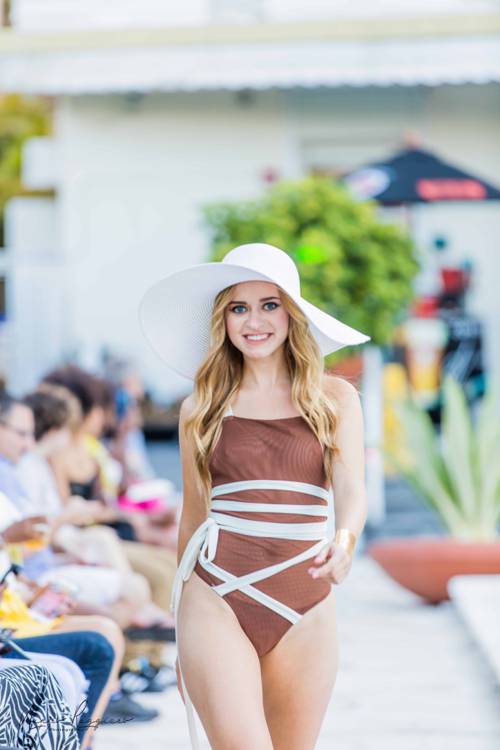
FAQ About The Cultural Influence of Art Deco in Fashion Design

What is Art Deco and how did it influence fashion design?
Art Deco is a visual arts style that emerged in the 1920s and 1930s, characterized by its bold geometric patterns, vibrant colors, and luxurious materials. In fashion design, Art Deco inspired garments incorporated these elements, emphasizing symmetry and modernity. This influence is evident in the streamlined silhouettes, intricate beadwork, and use of exotic materials found in clothing of that era.

What are the key characteristics of Art Deco fashion?
Key characteristics of Art Deco fashion include geometric patterns, luxurious materials like silk and velvet, intricate beadwork and embroidery, and silhouettes that emphasize vertical lines and symmetry. These elements combine to create an opulent and sophisticated look, often featuring bold colors and striking contrasts that reflect the architectural and decorative style of Art Deco.

How did Art Deco fashion reflect societal changes in the 1920s and 1930s?
Art Deco fashion reflected the societal shifts toward modernism and a break from traditional styles following World War I. The emphasis on geometric shapes and streamlined designs mirrored the industrial and technological advancements of the time. Women's fashion, in particular, saw a liberation with shorter hemlines and looser fits, representing the newfound freedom and changing roles of women in society.

Which fashion designers are known for their Art Deco-inspired designs?
Designers like Coco Chanel and Jean Patou are renowned for their Art Deco-influenced fashion. These designers embraced the geometric patterns and luxurious fabrics synonymous with Art Deco, producing clothing that was both chic and innovative. Their work helped to popularize Art Deco aesthetics in fashion, making them iconic figures of the era.

How do modern fashion designers incorporate Art Deco elements today?
Modern fashion designers often incorporate Art Deco elements by using geometric patterns, metallic fabrics, and bold colors reminiscent of the 1920s and 30s. These elements are adapted into contemporary styles through digital prints and modern cutting techniques, allowing designers to pay homage to the Art Deco era while presenting fresh and innovative collections.

What role did Art Deco jewelry play in the fashion of the time?
Art Deco jewelry was a significant part of fashion, featuring bold geometric shapes, vibrant gemstones, and intricate settings. Popular pieces included long necklaces, stackable bangles, and drop earrings, often made from platinum, diamonds, and onyx. These accessories complemented the streamlined silhouettes and opulent materials of Art Deco fashion, completing the luxurious look typical of the era.

Why is Art Deco considered a luxurious fashion style?
Art Deco is considered a luxurious fashion style due to its use of high-quality materials such as silk, satin, and velvet, along with extravagant embellishments like beads, sequins, and embroidery. The style's focus on elegance, opulence, and sophisticated design elements further contributes to its association with luxury. This emphasis on glamour and refinement helped cement Art Deco as an enduring symbol of lavish fashion.

What materials were commonly used in Art Deco fashion?
Common materials used in Art Deco fashion include silk, velvet, satin, and exotic fur, reflecting the luxurious and opulent nature of the style. These fabrics were often embellished with elaborate beadwork, embroidery, and sequins to enhance their visual appeal. The use of metallics, such as gold and silver threads, was also prevalent, adding to the characteristic glamour of Art Deco fashion.

How did the architecture of the Art Deco movement influence fashion design?
The architecture of the Art Deco movement influenced fashion with its emphasis on symmetry, geometric shapes, and bold, streamlined forms. Fashion designers translated these architectural elements into clothing designs that featured similar patterns and structures, creating a cohesive aesthetic that spanned multiple disciplines. This cross-influence helped Art Deco become a defining style of the early 20th century.

What are some famous Art Deco fashion pieces?
Famous Art Deco fashion pieces include the flapper dress, characterized by a loose fit and knee-length hemline adorned with beads and fringe. Another notable piece is the cloche hat, a popular accessory of the time. Evening gowns from designers like Coco Chanel, known for their elegant lines and luxurious fabrics, also exemplify the Art Deco style, capturing its essence through innovative designs.

In what ways did Art Deco fashion break away from previous fashion trends?
Art Deco fashion broke away from previous trends by rejecting the ornate, frilly, and conservative styles of the Edwardian era. Instead, it embraced simplicity, elegance, and modernity, with designs that featured clean lines and minimal decoration. The use of exotic fabrics and bold colors defied traditional norms, while the focus on geometry and symmetry introduced new aesthetic principles to fashion.

How did Hollywood influence the popularity of Art Deco fashion?
Hollywood played a significant role in popularizing Art Deco fashion as the film industry embraced the style in the 1920s and 1930s. Extravagant costumes designed for the silver screen set trends and inspired everyday fashion, bringing the glamour of Art Deco into mainstream consciousness. The allure of movie stars wearing Art Deco-inspired clothing further ignited public fascination with the style.

What is the connection between the flapper movement and Art Deco fashion?
The flapper movement and Art Deco fashion are closely linked as both embodied the spirit of liberation and modernity of the 1920s. Flapper fashion embraced the free-spirited Art Deco aesthetic through loose, embellished dresses and daring accessories. This style allowed women to express newfound freedoms and break from traditional constraints, aligning with the progressive ethos of the era.

How do Art Deco patterns differ from other design styles?
Art Deco patterns are distinct for their bold geometry, symmetry, and use of vibrant colors, contrasting with the more organic, flowing lines of styles like Art Nouveau. The focus on streamlined, precise shapes and the incorporation of luxurious materials set Art Deco apart, creating a sense of modern elegance that became a hallmark of the period.

What impact did World War I have on Art Deco fashion?
World War I had a profound impact on Art Deco fashion by accelerating societal shifts and technological advancements. Post-war, there was a move towards simpler, more functional clothing in reaction to wartime austerity. Art Deco fashion captured this new modernity and optimism, emphasizing sleek designs and innovative materials that reflected the era's forward-looking spirit.

How did Art Deco fashion address gender roles?
Art Deco fashion helped redefine gender roles by introducing more relaxed fits and shorter hemlines for women, symbolizing their increasing independence and changing social roles. The aesthetic's emphasis on clean, geometric lines also blurred traditional gender distinctions in clothing, reflecting broader societal shifts toward gender equality during the 1920s and 1930s.

Are there any modern fashion brands known for their Art Deco influence?
Several modern fashion brands draw inspiration from Art Deco designs, incorporating its geometric patterns and luxurious materials into their collections. Brands like Gucci and Balmain have been noted for their use of Art Deco motifs in recent years, showcasing the style's enduring appeal and versatility in contemporary fashion.

How are Art Deco elements used in fashion accessories today?
Today, Art Deco elements are often incorporated into fashion accessories such as jewelry, handbags, and shoes. Designers use geometric motifs, bold colors, and metallic accents to create pieces that evoke the opulence and sophistication of the Art Deco era, allowing these accessories to stand out as statement items.

What distinguishes Art Deco fashion from Art Nouveau fashion?
Art Deco fashion is distinguished from Art Nouveau by its emphasis on geometric shapes, repetition, and symmetry, compared to Art Nouveau's flowing, organic lines and nature-inspired motifs. Art Deco also favors rich materials and vibrant colors, whereas Art Nouveau tends toward softer hues and natural forms, highlighting the stylistic evolution between the two movements.

Why has Art Deco remained a popular influence in fashion design?
Art Deco has remained a popular influence in fashion design due to its timeless elegance and adaptability. Its focus on clean lines, geometric shapes, and luxurious materials appeals to modern tastes while providing a sense of history and sophistication. This versatility, combined with its inherent glamour, keeps Art Deco a prevalent and inspiring force in the fashion world.
